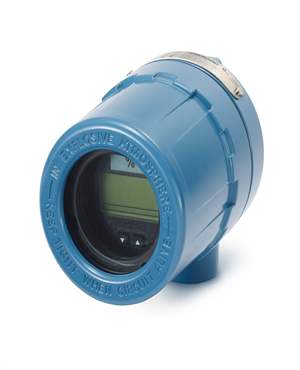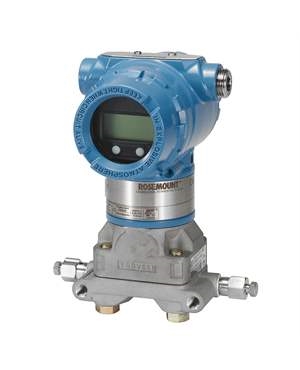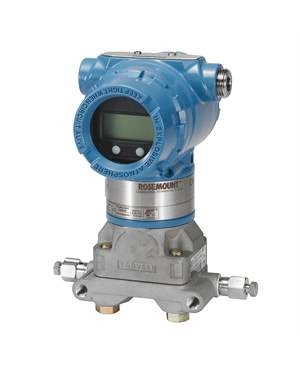How to Select Pressure Transmitter for Your Application?
Brian Craig
May 26, 2020
A pressure transmitter is a device that converts pressure into the analog signal. As the technology is developing, the transmitters are getting smarter, day by day. Therefore, the application of pressure transmitters is getting extravagant and its selection is being difficult. Since the pressure transmitters are mainly used for industrial processes, selecting a pressure transmitter becomes a complex process. It requires consideration of specific and critical industrial factors that not everyone can do without proper knowledge. Therefore, this post sheds light on factors to consider while selecting pressure transmitters.
A Few Important Factors to Consider While Choosing a Pressure Transmitter
Pressure transmitters are now supported by wireless technologies. This makes these devices applicable to the critical operations which were hardly possible before. They are now used as pressure sensors at engine test setups, for preventive maintenance in high-pressure fluid lines, in pharmaceutical industries, and even in mining industries. Therefore, being a performance-centered device, the pressure transmitters are to be chosen with caution. The factors that are required to consider while the selection is detailed as follows.
Pressure Conditions:
Since it is a pressure transmitter, it is used to sense the pressure and pressure fluctuation in the process. Therefore, while selecting a pressure transmitter, all possible pressure conditions must be addressed.
Operating Pressure:
The pressure transmitters are designed for a specific range of operating pressure. The operating pressure varies in differing applications. Therefore, the pressure transmitter must be selected within a suitable operational pressure range.
Extreme Maximum and Minimum Pressure:
In applications like testing gas leakage or water leakage through pipes, the pressure may suddenly drop or rise. In such cases, the operator must be aware of the highest and lowest pressure spikes that may occur during the operation. Low pressure may hamper the accuracy of the device whereas the high pressure may cause device damage. The selected pressure transmitter must be capable of handling both conditions, otherwise serious device damage might lead to accidents.

Process connectivity:
Pressure transmitters are often used in integrated systems. This means they are mounted on different components like orifice plates, pressure tanks, pipeline inlet or outlets, etc. Therefore, depending on versatility on connection, there are various types of mountings available. The selection of transmitters must compliment the mounting or type of connectivity. The following are a few important ones:
Inline Mounting:
When the pressure transmitters are connected directly in a single connection at the measuring end of the pipe, they are known as inline pressure transmitters. These transmitters are suitable for operations where direct pressure measurements are expected.
Coplanar Mounting:
This type of connection is made for differential pressure sensing. It is called a coplanar pressure transmitter and can be selected for operations where absolute or differential pressure measurements are expected.
Bi-planar Mounting:
In this bi-planar mounting, the bi-planar pressure transmitters are connected with two ports in the measurement line.
Remote Seals:
Most times, the pressure sensors are integrated with various types of mechanical components, which may expose them to oil, chemicals, temperature, corrosion, etc. Therefore, if the pressure sensors are being integrated into the impulse lines then there is one solution called remote seals. These remote seals can protect the transmitters from damage or reducing accuracy, as they help to isolate the sensing elements from damaging media. These can offer easy cleaning options to enhance the performance of the setup. Therefore, while selecting pressure transmitters, the devices with remote seals should be selected.
Operational Considerations:
The environment where the pressure transmitter is being operated should be considered in the selection process. The following are the environmental or operational considerations that are important for selection.
Now that you are guided with a selection of pressure transmitters, there is the last guideline is to purchase it from a trusted supplier. The Transmitter Shop (TTS) provides premium quality pressure transmitters that may fit all your selection needs. They allow customers to choose from new, surplus, and reconditioned transmitters.
- The pressure transmitter must be selected with a remote seal that can handle the high temperature. In applications like fluid pressure measurement, the temperature may rise beyond considerations.
- Mechanical vibrations are to be considered while selecting a transmitter. If a transmitter is to be installed, it should be installed at a low vibration, low fluctuation conditions
- Pressure pulse fluctuation can damage the sensor, therefore, a transmitter must be chosen by considering its compatibility with pulsation damper
- If required to use in hazardous areas, the pressure transmitter must be ATEX, CSA, FM, and IECEx approved.
Now that you are guided with a selection of pressure transmitters, there is the last guideline is to purchase it from a trusted supplier. The Transmitter Shop (TTS) provides premium quality pressure transmitters that may fit all your selection needs. They allow customers to choose from new, surplus, and reconditioned transmitters.
Related Product Table of Pressure Transmitters
| Model List | Measurement Type | Brand | Process Connection Type | RFQ |
| 3051T | Gauge and Absolute Pressure | Rosemount | Inline Pressure Transmitter | |
| 3051C | Gauge, Differential and Absolute Pressure | Rosemount | Coplanar Pressure Transmitter | |
| 3051S | Gauge, Differential and Absolute Pressure | Rosemount | Coplanar Pressure Transmitter | |
| 3051ST | Gauge and Absolute Pressure | Rosemount | Inline Pressure Transmitter | |
| 2088 | Gauge and Absolute Pressure | Rosemount | Inline Pressure Transmitter | |
| 2051T | Gauge and Absolute Pressure | Rosemount | Inline Pressure Transmitter | |
| 3051C | Gauge, Differential and Absolute Pressure | Rosemount | Coplanar Pressure Transmitter | |
| 3051S | Gauge, Differential and Absolute Pressure | Rosemount | Coplanar Pressure Transmitter | |
| 3051ST | Gauge and Absolute Pressure | Rosemount | Inline Pressure Transmitter | |
| 2088 | Gauge and Absolute Pressure | Rosemount | Inline Pressure Transmitter | |
| 2051T | Gauge and Absolute Pressure | Rosemount | Inline Pressure Transmitter |
Related Posts
- What are the Steps Involved in Calibrating Pressure Gauge?
- All Important Questions on Reconditioned Transmitters Answered
- Is Remanufactured Transmitter a Better Option than a New One?
- Differential Pressure Transmitters: How Do They Help in Flow Measurements?
- 3 Whats that Explain How Often You Should Calibrate Pressure Transducer
- Guidelines for Troubleshooting Pressure Transducers
- Learn How to Calibrate a Pressure Transmitter – II
- Learn How to Calibrate a Pressure Transmitter
- Know Three Interesting Uses of Pressure Transmitters
- Things to Check before Buying a New Pressure Transmitter
- A Look at Various Types of Industrial Transmitters – Part II
- A Look at Various Types of Industrial Transmitters Part I
- All Questions on Smart Transmitters and their Calibration Answered
- 3 Major Pressure Transmitter Technologies That Made the Device Popular
- An Unconventional Guide to Selecting the Right Pressure Sensor
- Factors To Be Considered While Differentiating $40 and $400 Pressure Transmitters
- Tips to Augment the Performance and Service Life of Pressure Transmitter
- Factors of Consideration When Choosing Pressure Transmitters
- 5 Most Popular Pressure Transmitter Technologies
- Tips to Improve the Performance of Pressure Sensors
- Factors to Consider When Choosing a Pressure Transmitter Manifold
- Safety Tips for Differential Pressure Transmitter Operation
- Impact of Shock and Vibration on Pressure Transducer
- Rosemount 3051S vs 3051C Transmitter – What is Your Choice?
- Rosemount 2088 Vs Rosemount 3051 – A Few Points of Differences Discussed
- Difference in Conventional Transmitters and Smart Transmitters
- How to Choose Diaphragm Seals for Your Application?
- How to Select Pressure Transmitter for Your Application?
- Remote Seals: Significance, Working Principle & Applications
- How Do You Calibrate A Flow Transmitter?
- What is Absolute Pressure Transmitter & how does it work?
- HART Communication Protocol: Overview, Working Principle, Benefits in Industrial Automation
- Absolute and Gauge Pressure Transmitters - Overview and Working Principle
- Flow Meter vs Flow Transmitter: Know the Difference
- How Do You Test for 4 to 20mA Signal in a Pressure Transmitter?
- Multivariable Transmitter: What Is It and How Does It Work?
- Pressure Transmitters vs. Pressure Transducers: Learn the Differential Characteristics
- Procedure to Calculate Accuracy of Pressure Transmitter Discussed
- Testing Pressure Gauges: Processes of Verification Test and Functional Test
- An Ultimate Selection Guide for Flow Transmitters
- The Benefits and Challenges of HVAC System Balancing
- Fluid Flow Isolation Techniques for Pressure Instrumentation
- Understanding Pressure Ranges and Units for Fluid System Monitoring
- Understanding the Impact of Pressure Fluctuations on Drying Performance
- Monitoring and Controlling Energy Production in Power Plants
- Common Challenges in Air Flow Measurement and How to Overcome Them
- Pressure Monitoring in Pump Systems: A Comprehensive Guide
- Exploring Density and Viscosity Measurement in Industrial Processes
- Pneumatic Pressure Controllers: A Safe Choice for Hazardous Areas
- A Practical Guide to Vacuum Measurement and Operation
- Key Sensors for Monitoring Emissions in Wet and Dry Scrubber Systems
- Complete Hydrogen Gas Safety and Measurement Solutions
- Steam Boiler Drum Level Measurement A Comparison of Control System Technologies
- Furnace Flame Sensor Faults Everything You Need to Know for Safe Operation
- Comparison between Multi Valve Manifolds Block Valves and Bleed Valves
- Furnace Flame Sensor Faults Everything You Need to Know for Safe Operation
- Pneumatic Pressure Controllers: A Safe Choice for Hazardous Areas
- How Can Greenhouse Gas Emissions Be Reduced?
- A Practical Guide to Vacuum Measurement and Operation
- Understanding Electrochemical Detection: Principles, Techniques and Environmental Application
QUICK ENQUIRY







